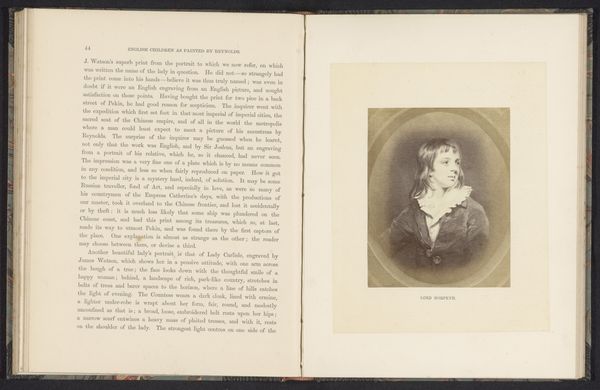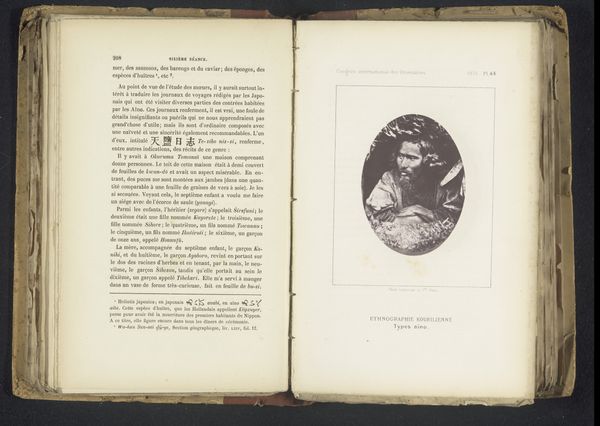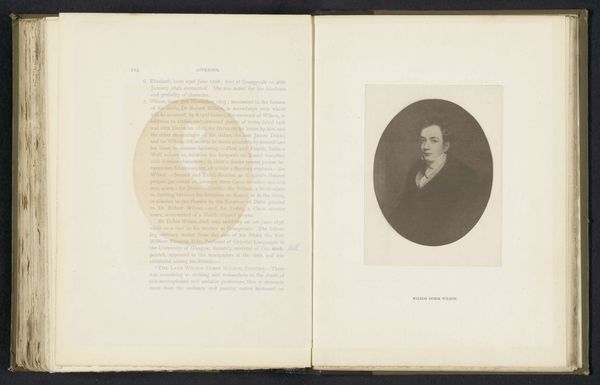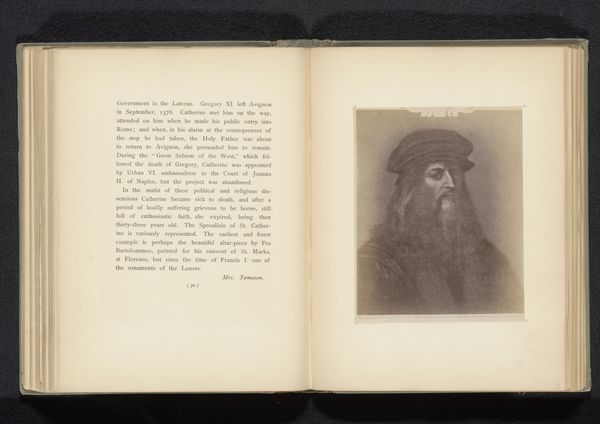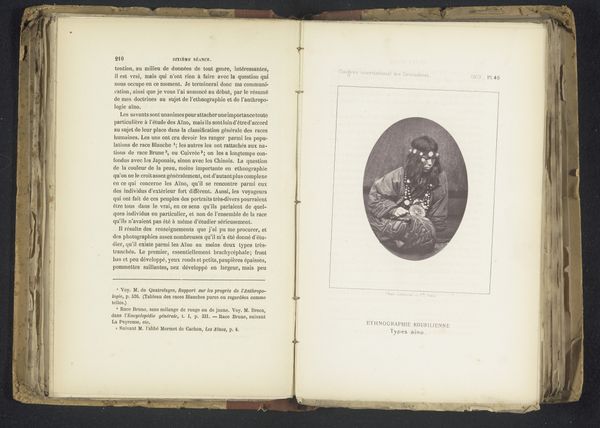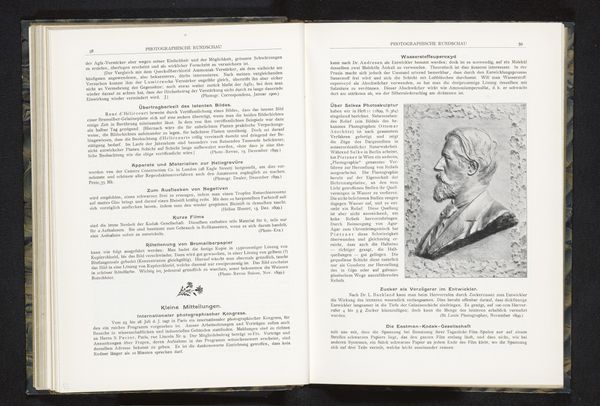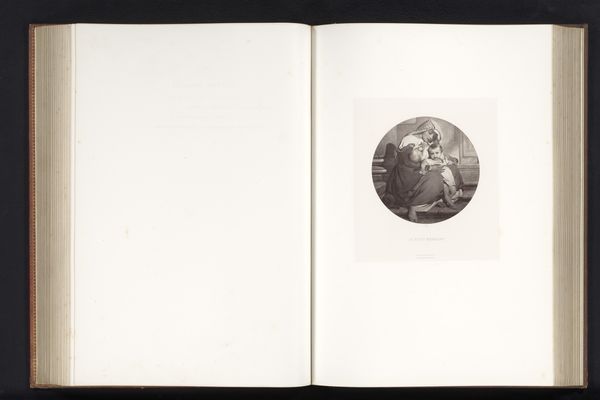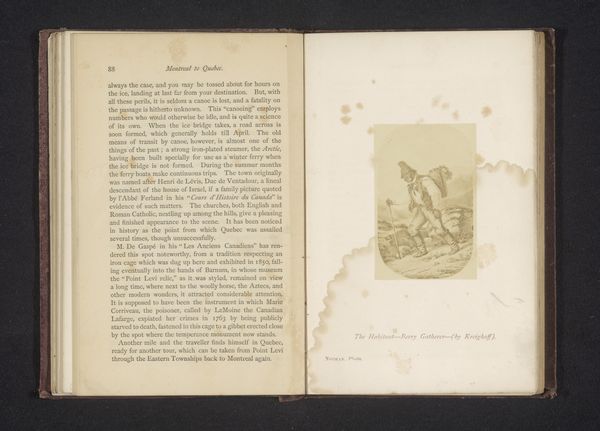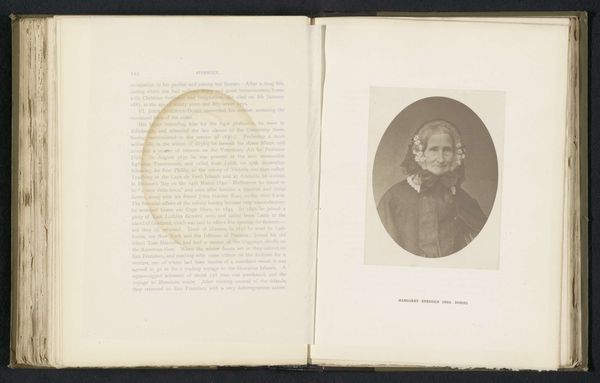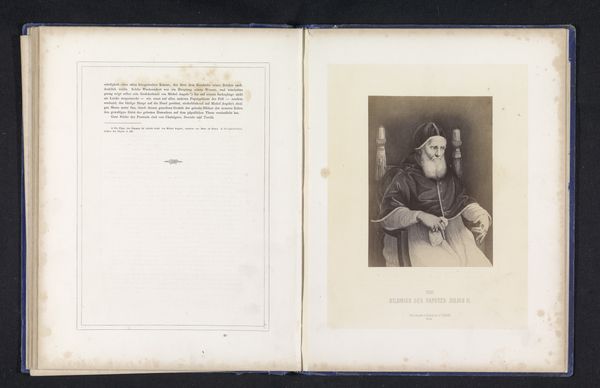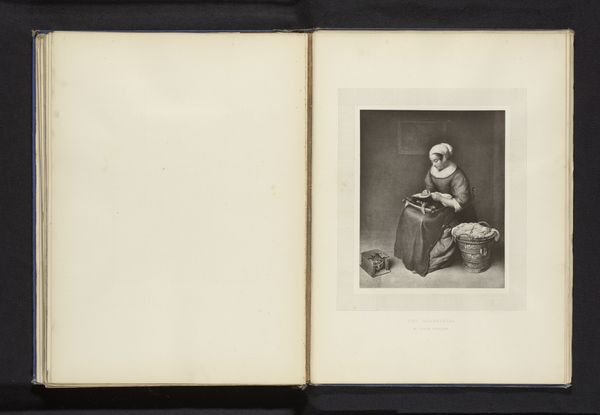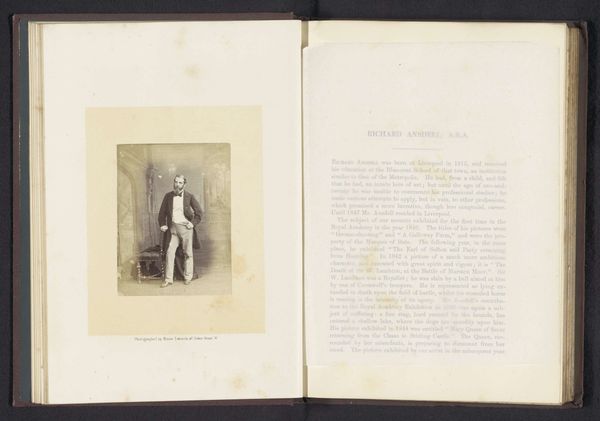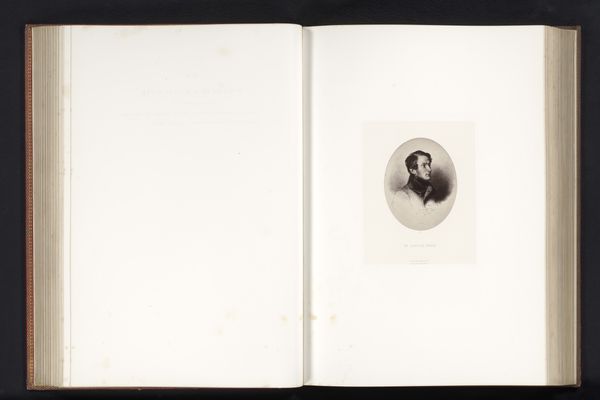
print, albumen-print
#
portrait
# print
#
albumen-print
Dimensions: height 130 mm, width 98 mm
Copyright: Rijks Museum: Open Domain
Curator: This is "Miss Jenny Wilson," a fascinating albumen print dating from before 1896. The image, housed within what appears to be an album, offers a delicate oval portrait of the sitter. Editor: There's a subtle melancholy to her gaze. It’s also interesting how the photographic process renders textures like the ruffles of her collar and the fabric of her dress, softening her overall presence. Curator: Precisely. The albumen print process involved coating paper with albumen, from egg whites, making it exceptionally receptive to light. This allowed for the capture of incredibly fine detail, evidenced in the almost palpable texture you noted, from lace to the very structure of the paper itself. This specific printing technique democratized image production and changed portraiture. Editor: It raises the question of labor involved—someone carefully preparing the paper, meticulously coating it with egg whites… what kind of social ecosystem supported that? Was there a specific division of labor based on gender, class, and photographic skills? Curator: That is an excellent point. These materials and production processes, while yielding a refined aesthetic, were embedded in specific socioeconomic practices. Looking closely at the oval composition, do you find it classical in its format and framing? It also features in what seems to be a publication— juxtaposed with adjacent textual narratives within its surrounding printed matter, inviting us to ask who and what determines value. Editor: True, it brings us back to our ideas of portraiture—it wasn’t about representing Miss Jenny as an individual necessarily, but to communicate social ideas surrounding family, community, and access. What might its location, context, or physical production mean to those for whom photographic portraiture became a new material language? Curator: Absolutely, viewing it through the lenses of its materials allows the work's conceptualization as more than a mere likeness and considers this an exercise in how representation functions materially and ideologically. Editor: The careful and thoughtful examination of form and materiality, allows us to access this period from fresh angles, providing further insight for us as well.
Comments
No comments
Be the first to comment and join the conversation on the ultimate creative platform.
